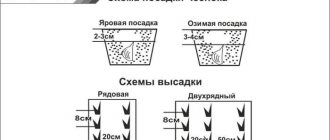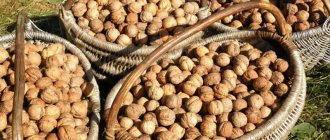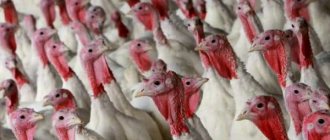Business plan for growing potatoes on a sown area of 10 hectares.
How much money do you need to start this business?
According to preliminary calculations, to open a potato growing farm you will need to invest at least 6,950,000 rubles:
- Registration of a land plot, making a deposit – 200,000 rubles.
- Purchase of equipment and machinery – RUB 2,450,000.
- Construction of a vegetable storage facility – 3,000,000 rubles.
- Purchase of planting material – 800,000 rubles.
- Primary tillage, application of fertilizers – 100,000 rubles.
- Business registration and other organizational expenses – 100,000 rubles.
- Reserve fund – 300,000 rubles.
Business profitability
Compared to working with most other agricultural crops, the potato business is characterized by increased profitability. The initial costs can be recouped literally in the first few months. The main thing is to properly build a business and establish sales channels. According to experts, the profitability of the enterprise can reach 150%.
The main costs in this case fall on the rental or purchase of land from 2.5 hectares, which will amount to about 20% of all investments. The necessary agricultural machinery will require another 25% of the budget. A little less will be spent on the wage fund. Planting material will cost an additional 20%, the same amount will be required for transportation costs, fuel for equipment, organic matter and fertilizers.
Despite the seemingly large investments, it is necessary to understand that the amount will decrease from year to year, since the purchase of equipment is a one-time expense, and the costs of its operation are not so great. In addition, starting from the second year, you will have your own planting material, which is especially beneficial.
A separate advantage is the possibility of processing potatoes. Of course, this will require significantly expanding and modifying production by installing additional production lines (for example, to produce potato flour or alcohol), but the final result will give profit at a fundamentally new level.
Meanwhile, potatoes themselves are a demanding crop that requires proper processing and storage conditions. She does not allow herself to be treated carelessly, which can be understood from numerous reviews on the Internet.
Step-by-step plan for opening a potato farm
Our farm plans for the current year include the following sequential actions:
- Search and rent a plot of land from the municipality with an area of 10 hectares. The lease agreement is planned to be concluded for a period of 49 years with the right to purchase.
- Business registration and collection of necessary documents. As an organizational form, it is planned to register a peasant farm (peasant farm) and switch to a single agricultural tax (Unified Agricultural Tax, 6% of profit).
- Purchase the necessary equipment.
- Hire staff.
- Purchase planting material.
- Till the soil and prepare it for sowing.
- Carry out sowing work.
- Monitor the growth of plantings, carry out all necessary measures for watering and processing plants.
- Harvest
- Carry out a number of marketing activities and sell the entire volume of grown products.
Planting potatoes
The soil for planting potatoes is also prepared in advance. If the field is small, it is loosened with a pitchfork or dug up with shovels. For potato fields of several hectares, agricultural machinery is used.
The timing of planting tubers depends on the climatic zone of cultivation. In the southern regions, the soil warms up early, so they begin to plant potatoes there at the end of March, in the middle zone - in May, in the north of the country - at the beginning of June. Before planting, check the soil temperature: the ground should warm up to a depth of 10-12 cm to a temperature of 8-10 °C.
Potatoes are planted evenly with a distance between plants of about a meter. To make the bushes develop normally and make it easier to process the plantings, it is recommended to leave from 65 cm (for early varieties) to 80 cm (for late varieties) between rows. Such row spacing will allow you to use equipment in your work. When seed potatoes are planted, at least 30 bushes are placed on one square meter of land.
Potatoes are planted to a depth of 5-8 cm, forming a ridge of about 10 cm along the top. After two weeks, the planted area is checked for weeds, if necessary, weed and hill up the beds, increasing the ridge by another ten centimeters.
Why is hilling necessary?:
- less weeds grow;
- the soil is loosened and the roots receive more moisture and air;
- the bush, after sprinkling the lower part with soil, branches and grows stronger, more tubers form on the roots;
- It’s easier to harvest from hilled beds.
Description of products and technology
The crops on our farm will be grown according to the Mittlider method. According to this technology, planting material is planted in ridges half a meter wide, with wide (up to a meter) passages. The perimeter of the site is fenced with earthen beads in order to save water. Plants are subject to regular watering and fertilizing three times a season. Hilling potatoes using this technology is not required. This technology makes it possible to reduce the size of the area under potatoes by three times, while significantly increasing the yield of the crop. It is planned to produce up to 30 tons of marketable potatoes from one hectare (part of them will be used for planting material). Potatoes will be sold in bulk at an average annual price of 15 rubles/kg. In total, it is planned to produce and sell up to 300 tons of potatoes per year. The approximate annual turnover of the farm will thus be 4,500,000 rubles.
Download a business plan for growing potatoes from our partners, with a quality guarantee.
Advantages and possible risks
Growing potatoes has its advantages and disadvantages. The main advantage is excellent profitability. Especially in large cities, where not everyone has a dacha.
What are the pros and cons of business also worth considering:
| Advantages | Possible risks |
| Low initial investment, high profitability. | Seasonality of business. |
| Unpretentiousness of potatoes and a large selection of varieties resistant to pests and diseases. | Risk of crop failure due to bad weather conditions. |
| The ability to raise a business without special skills and abilities. | High competition. |
The main disadvantage is seasonality - you can grow potatoes without a greenhouse only in the summer. This is beneficial only in the southern regions, where two harvests are harvested per year. In the north and in the middle zone, it is more profitable to build a greenhouse - it will quickly pay for itself.
What equipment to choose for growing potatoes
The use of technology will significantly reduce labor costs and increase farm efficiency. Therefore, it is planned to purchase the following machines:
- Tractor MTZ-80 (900 thousand rubles);
- A machine for inter-row tillage (350 thousand rubles);
- Potato planter (350 thousand rubles);
- Potato harvester (450 thousand rubles);
- Sorting line (400 thousand rubles).
In total, about 2.45 million rubles will be spent on the purchase of equipment and machinery. It is planned to purchase the elite mid-late potato variety “Golubizna” as planting material. The price per kilogram will be 40 rubles. About 800 thousand rubles will be spent on purchasing planting material. The construction of a modern vegetable storage facility will allow storing potatoes until the high season (spring), when the price of vegetables increases by 2–3 times. Investments in the construction of a vegetable storage facility will amount to at least 3 million rubles.
Business organization algorithm
In order for growing root crops to be profitable, you need to think through every step. Initially, you need to complete the following documents:
- if an entrepreneur plans to do business on his own small plot and the activity falls under the definition of subsidiary personal farming, then it is not necessary to go through the registration procedure with government agencies, but it will be possible to sell the goods only independently;
- if the business is planned to expand to an industrial scale, then you should register with the Tax Inspectorate as an individual entrepreneur, choosing OKVED A. 01.13.21 and the Unified Agricultural Tax system.
When organizing a large business, it is worth considering that wholesale buyers and retail chains are more willing to cooperate with individual entrepreneurs than with individuals, so officially registered entrepreneurs have more options for selling grown products.
Potato
Also follows:
- rent or buy land;
- prepare the land for planting root crops;
- rent equipment;
- organize a watering system;
- purchase planting material (in the first year, in the future it will remain from the previous harvest);
- organize a place to store products.
Growing potatoes in large quantities requires fields and equipment
Necessary equipment
Financial plan
Before organizing a potato business, you need to carefully calculate investments and risks.
Fixed annual expenses
- Rent – 240,000 rub.
- Salary + insurance contributions – 715,000 rubles.
- Costs for soil treatment (fertilizers, watering, pest protection) – 150,000 rubles.
- Fuel and lubricants – 200,000 rubles.
- Depreciation of equipment – 120,000 rubles.
- Equipment repair – RUB 80,000.
- The cost of storing the crop is 150,000 rubles.
- Accounting – 60,000 rubles.
- Other expenses – 50,000 rubles.
Total – 1,765,000 rubles.
Business relevance
Growing potatoes is always a relevant business, since this root crop is a frequent guest on every table. Even if a family has a private plot of land, not everyone can meet their needs for the quantity of potatoes and, accordingly, purchases them.
Growing potatoes is always profitable
For an entrepreneur, the advantages of business are:
- in the ease of growing root crops;
- in the absence of dependence of demand for the sold product on the time of year;
- low costs for seed and fertilizers;
- in quick payback - with the right approach, the business will begin to make a profit from the first season.
The disadvantages and difficulties of entrepreneurship include:
- low price when selling the product;
- seasonality - it is impossible to grow potatoes all year round in the Russian climate;
- the need to regularly treat plants against pests and install irrigation systems in the fields in case of drought.
Potato consumption potential in Russia
How much can you earn from growing potatoes?
Thus, the net profit of the farm for a year of operation will be 2,570,900 rubles, subject to 100% sales of all grown products. Under the most favorable circumstances, the return on the initial investment occurs already in the third year of operation. However, in practice, taking into account all the risks (weather, problems with sales, etc.), the return on investment will not occur earlier than in four years.
We recommend downloading a business plan for growing potatoes from our partners, with a quality guarantee. This is a full-fledged, ready-made project that you will not find in the public domain. Contents of the business plan: 1. Confidentiality 2. Summary 3. Stages of project implementation 4. Characteristics of the object 5. Marketing plan 6. Technical and economic data of the equipment 7. Financial plan 8. Risk assessment 9. Financial and economic justification of investments 10. Conclusions
Registration and legal issues
Registration of this business activity is not always mandatory. For example, if the land on which the crop is grown is classified as a personal subsidiary plot, and the surplus potatoes are sold on the market, then it is not at all necessary to register the business. However, big profits will not be achieved with this approach.
If we are talking about the desire to have a profitable potato growing business, then the first thing you need to do is register as an individual entrepreneur. One of the stages of this process is the selection of the OKVED code. Necessary is 01.11.2, it includes not only the cultivation of potatoes for sale, but also allows the sale of planting material.
The most favorable tax system in this business is the Unified Agricultural Tax or Unified Agricultural Tax, which is 6% of net profit. The form is available only for those who are engaged in independent production and subsequent sale of agricultural products. If you already have an existing enterprise that plans to transfer to the Unified Agricultural Tax, it is necessary that the share of income from potatoes be at least 70% of the total amount.
There are two taxation options – general and special, each with its own characteristics. In the first case, the enterprise will also have to pay VAT, taxes on property used for work, transport tax and unified social tax, as well as a number of others.
If an enterprise switches to the Unified Agricultural Tax, it is exempt from the need to pay personal income tax and also receives a number of other financial benefits. This alone makes the option much more attractive than prose.
To switch to the Unified Agricultural Tax in the Russian Federation, you will need to submit an application to the Federal Tax Service. The deadline for filing an application on a general basis is October 20-December 31, on an individual basis - within a month from the date of registration as a legal entity. Important: tax transition dates vary. In the first case, this will happen at the beginning of the new calendar year, and in the second, it will take place in parallel with registration with the Federal Tax Service.
An equally important point: you can change the form of taxation during the year. If the enterprise ceases to conduct activities in the field of agriculture or its priorities change, so that it no longer meets the requirements, the abolition of the unified agricultural tax is carried out forcibly, which should be avoided.
In the mentioned taxation system, expenses are understood as all costs for the purchase of means of production, wages to employees and advertising. All expenses must be entered into the accounting book. Income refers to funds received at the cash desk or into the company's bank account.
What documents are needed to open
Growing potatoes for sale in retail outlets will require registration of a peasant farm. Documents that will be required in this case:
- Registration application written by the entrepreneur and certified by a notary.
- Photocopies of passport and taxpayer ID code.
- Receipt for payment of state duty.
If you are starting a business with partners, you will also need to draw up an appropriate contract, which specifies: telephone numbers, the responsibilities of each entrepreneur, the procedure for accepting and leaving the business of its members.
Selling potatoes
The issue of selling grown potatoes is one of the main ones. There are several ways to sell the crop:
- Agreement with trade, catering, sanatorium and resort treatment enterprises, etc. It is quite difficult to work with retail chains, since your competitors will be large potato farms that offer a lower purchase price.
- Delivery to enterprises for further processing is advisable when you need to sell a large batch of goods. Unfortunately, factories buy raw materials for processing at low prices.
- Independent sale on the market at retail and small wholesale. This option is suitable if you sell small volumes of products. But in this case, you must provide storage conditions for the crop.
Eventually
This example of a production plan demonstrates the cost of business at first. But when implementing it, it is worth remembering that potato growing is a win-win option for starting a career, which will not lose popularity over the years. This means that the profitability of the business is extremely high, and the business is able to generate income for many years.
The potato growing business itself is a profitable business. However, the amount of profit depends on the skillful implementation of the project. Therefore, emphasis must be placed on the quality of grown products. It must be remembered that an environmentally friendly organic product is valued many times more than a product created using chemicals. Of course, the investment in an organic product is quite large. But the income from these products will not be long in coming.
Sales of goods
Sales of grown potatoes can be carried out through the following channels:
- Cooperation with large retail chains.
- Conclusion of a contract with wholesalers.
- Selling products at fairs and food markets.
- Sales of goods to grocery stores.
- Sales of products to processing organizations.
Solving issues with long-term storage of potatoes can facilitate their sale during the winter season at a higher price.
The environmental qualities of the product being sold can also affect its price and significantly increase the demand for the product.
Your own business: potato processing and canning
A product such as potatoes is used both for home processing and for processing into food. In the first case, starch, alcohol, and fine flour are produced from potatoes, and in the second case, chips, crackers, dry mashed potatoes, etc. are made from them. Manufacturers divide the entire range of potato processing products into four conventional groups: dried (these semi-finished products are intended for long-term storage for at least one year), fried (such products have a short shelf life of no more than three months), frozen (these products have a short shelf life of three months or more) and, finally, canned (for short-term storage at period no more than three months).
The raw materials for each of the above processing methods are subject to special requirements in terms of variety, shape, size, dry matter content and reducing sugars in tubers. For example, potato varieties with a high starch content (it should be at least 13-18%) are used for processing to obtain starch and alcohol. But in food production, preference is given to varieties with a low content of reducing sugars and a high dry matter content, which determines the taste of the product. Accordingly, each of these potato processing methods has its own characteristics. Thus, during the drying process, a significant amount of water contained in it is removed from the feedstock. When moisture evaporates, the nutrients contained in the cells of fresh plant products in dissolved form are converted into concentrate. At a certain concentration of nutrients in the solution, the osmotic pressure that arises in it as a result prevents the absorption of nutrients by microbial cells.
As is known, it is the development of microorganisms that leads to rapid spoilage of products, therefore, at increased concentrations, products can be stored without deterioration in quality and spoilage for a relatively long time. However, when the moisture content increases during storage, the development of microorganisms resumes. For this reason, the moisture level in dried vegetables should not exceed 12-14%. When drying, water evaporates from the surface of the processed product, crushed into small pieces, followed by removal of the resulting vapors. To do this, the raw material is heated, and the vapors are absorbed by some material and removed along with it.
The best option is to use hot air for drying. The heated moving air acts as a coolant and then absorbs the resulting water vapor. This processing method uses potatoes of certain varieties. Preference is given to tubers of regular round shape, with thin skin and small eyes. The tubers must be large enough, and their dry matter content should not be less than 21%. The optimal varieties are those bred for the middle zone of our country (Berlichingen, Oktyabrenok, Majestic, Epron, Lorch). However, you can also use local potato varieties that meet the above requirements. The drying process includes several stages.
First, the potatoes enter the drying shop. There, using special equipment, it is washed and calibrated in size. Then, on mechanical (or abrasive) potato peelers or steam-heated units, the washed and sorted potatoes are peeled. Modern production also uses a more modern method of peeling - using alkaline solutions. This processing method has certain advantages: it can significantly reduce waste during cleaning. Even the smoothest tubers still have numerous irregularities on their surface and depressions (the so-called eyes). It is impossible to leave eyes, otherwise it will negatively affect the quality of the product, therefore, after general cleaning, all irregularities are cleaned by production workers using ordinary knives. Potatoes, peeled and free of foreign particles, are cut into plates or mugs of equal thickness. The thickness and dimensions of the workpieces should not differ, otherwise the pieces will not dry evenly.
The chopped potatoes are sent to the so-called scalders, where they are blanched. As a result of this procedure, enzymes in the raw materials are destroyed, which lead to darkening of the product. Since blanching is carried out using very hot water, in order to prevent raw potatoes from boiling and wash away starch from their surface, the raw materials are washed with cold water in a special shower sink. The processed pieces are laid on drying sieves at the rate of 15-18 kg of semi-finished product per square meter of sieve surface. In most cases, a belt dryer is used for drying potatoes with the ability to set a certain temperature over each belt. For example, the temperature above the top belt is set at about 55-60°, above the second - 65°, above the third - 60°, etc. The humidity of the finished product should not exceed 12%. To achieve this indicator, treatment will be required for 4-5 hours.
The second most popular method for preserving potatoes is freezing. Low temperatures are used to cool fruits and vegetables, as well as to freeze them. Both cases have their own distinctive features.
For example, when cooling during processing, raw materials receive minimal mechanical damage. In addition, the integrity and viability of its cells is maintained. When frozen, vegetables undergo mechanical and technological processing (washing, peeling, slicing, blanching), which leads to disruption of their physiological and biochemical processes. After this, they can only be stored at temperatures below 0°. When freezing, the moisture contained in the cells and intercellular fluid turns into ice, which violates the integrity of the cell membranes throughout the entire mass of the product. Fast freezing with intensive cold supply helps improve the quality of frozen vegetables. Modern freezing units allow you to freeze vegetables at a refrigerant temperature (it can be brine or air) from -25° to -35°. By the end of the freezing procedure, the temperature of the product itself is -18°. Quick-frozen vegetables are stored at a temperature no higher than -18°.
This method of canning potatoes is more expensive than drying. It requires complex refrigeration equipment, and it is needed not only for freezing, but also for subsequent storage of semi-finished products. However, the demand for quick-frozen vegetables and fruits is growing (especially in winter), so such investments will quickly pay off. Processing raw materials for freezing is practically no different from preparing potatoes for canning using other methods. This includes washing, sizing, cleaning, cutting and blanching. The main difference is that in the production of frozen semi-finished products, potatoes are rarely used on their own. It is usually included in vegetable mixtures. Mixtures are called semi-finished products for dishes. To prepare them, all vegetables are blanched, mixed and frozen in boxes and bags with a capacity of 0.5-1 kg or in jars with a capacity of up to 10 kg, which are sold to public catering networks. Industrial freezing uses a low-temperature refrigeration chamber.
First, liquid coolants are cooled (this can be a concentrated solution of calcium chloride, which does not freeze at low temperatures) using a compressor operating with liquid ammonia or another refrigeration unit. The cooled brine is fed through pipes into the freezers, cooling the air there, which, in turn, freezes the food. The air can also be cooled outside the freezer. Sometimes conveyor quick-freezers equipped with a conveyor with a metal belt are used.
So, to process potatoes (without additional canning) you will need the following equipment: a lifting and dumping device, a receiving container, an installation for preliminary cleaning of soil, dirt and sand, a washing installation with an outlet conveyor, a dry cleaning installation, a sorting and sorting table, a calibration mesh or radial (universal) installation, packaging installation, conveyors, conveyors, elevators. You will also need machines for cutting potatoes, with which you can cut tubers into rectangular strips (for French fries) and slices 1-1.5 mm thick (for chips). Almost all of this equipment can be used to process any fruits and vegetables with a rigid structure, not limited to potatoes. As a rule, such technological complexes for processing vegetables are used in canning, vegetable drying and processing enterprises, in farm and private industries.
Cost price
Before creating a potato production business, you need to assess how profitable the enterprise will be , and to do this, estimate the cost of the process. Determine how much money will have to be spent on purchasing equipment, planting material, paying staff, and so on.
Cost of equipment for working with seed minitubers
This is a unique installation that can be used both outdoors and indoors. It is intended for obtaining a large number of minitubers from one plant.
If you use the installation in the spring-summer period, then energy costs are significantly reduced, since artificial lighting is not required for production. The cost of this equipment is 180 thousand rubles.
Tuber costs
The cost of planting tubers varies from 8 to 30 rubles per kilogram , depending on the season of purchase. So if you buy tubers in the spring, their price will be maximum.
But it is not advisable to make a purchase in the fall, since it is unclear how they will be stored during the winter. Therefore, for calculations it is better to take the average price - 25 rubles.
To avoid large consumption of planting material, large and medium-sized tubers are cut into pieces weighing 40-50 g - so that each piece has 2-3 sprouts. In years of warm, not very wet spring, the yield from them is no lower than from whole tubers of approximately the same weight.
Buying or renting land
This is one of the important stages in creating a potato growing business. On average, one hundred square meters of land costs 5 thousand rubles . If we take into account that we need 0.3 hectares, then the investment will be equal to 80 thousand rubles. But at the first stage, the only option is not to spend money, but to lease the land for 49 years from municipal organizations.
If we take into account that such an area will be allocated somewhere in the countryside, then the cost will not be high. As soon as the business is established and begins to generate constant profits, you can think about purchasing a plot of land.
Is it profitable to grow for sale?
Let's look at the costs involved in starting a business selling potatoes.:
- land rent within 200 thousand rubles;
- purchase of planting material – 300 thousand rubles, assuming that 10 hectares of land will be planted;
- fertilizers – 100 thousand rubles;
- questions about organization – 100 thousand rubles;
- purchase of equipment – 2.5 million rubles;
- construction of a vegetable storage facility – 2 million rubles.
If we take into account that a farm for the industrial production of potatoes is being created with a land area of 10 hectares, then the investment will amount to around 5.2 million rubles.
If we assume that 250 tons of tubers can be collected from 10 hectares in a harvest year, then we can assume that the profit in one season will be 10 million rubles (read about the secrets of agricultural technology for growing large root crops here, and from this article you will learn about how to get a rich harvest of early potatoes). Let us subtract from this amount the initial capital of 5.2 million and monthly expenses of 864,000 rubles, then the net profit for the season will be 3.936 million rubles.
The amount of investment is considerable, so it is better to start with smaller territories and then expand your enterprise.
Work technology
Rules for planting and growing
Depending on the variety, the tubers differ in appearance, color and ripening time. Early varieties take up to 2 months to ripen, and late varieties take 110 days. In terms of characteristics, the later options are considered the best. The most common varieties now are Aurora, White Vesna, Utenok, Lorch, Ilyinsky, Slavyanka and Adretta.
It is recommended to germinate the potatoes 14 days before the intended planting. This is not difficult to do: take the tubers out of the cellar into a room where the temperature is maintained at +15°C. When the sprouts appear, you need to discard the spoiled planting material. The remaining potatoes are treated with a special solution that increases yield (dissolve 5 g of manganese sulfate and 6 g of copper sulfate in a 10-liter bucket of water).
The soil where you plan to plant potatoes should be non-clayey and dry. Areas where pumpkin, cabbage, root vegetables and legumes used to grow are well suited for this purpose.
The soil is prepared in the fall, removing all weeds. Then they plow the ground and collect all the weed roots and burn them.
As for fertilizing, up to 20 tons of humus and sawdust need to be added to 1 hectare of land. It would also be a good idea to fertilize the potatoes with nitrogen, phosphorus and potassium, 80, 80 and 130 kg respectively.
As soon as warm weather sets in with temperatures above +10°C, the soil will need to be plowed to a depth of 20 centimeters, and then the tubers will be planted using a potato planter. The rows should be 45 cm apart, and the interval between holes should be at least 20 cm.
Features of harvesting
You need to dig up potatoes before frost occurs in dry, sunny weather. 14-21 days before this, the tops are mowed or dug up, thereby accelerating the process of ripening of root crops.
After the tubers are dug up, they are dried for 21 days and then carefully sorted. Rotten specimens are thrown away, cut ones are left as food for pets, seed tubers are selected, and the rest is sold.
In the fall, the cost of the product will be low, so it is more profitable to build a room for storing potatoes and keep them there until prices rise in the spring. The vegetable storehouse must be dry and clean, ventilation is required, and the temperature should not rise above +2°C. In addition, it is important to protect the warehouse from rodents and other pests.
Sales
A potato business can bring great profits. But for this, before you take this matter seriously, you need to find someone who will purchase this product at a price favorable to the seller. Therefore, you need to research the market first.
You can offer the potatoes to shops and market stalls. It is important that the products meet all requirements: they are not stored longer than expected and are not damaged.
You can sell the tubers on the market yourself. If the quality of the product is high and the promotion is good, regular customers will appear quickly. The main thing is to trade at the peak of rising prices.
If we talk about profitability, then from a hectare of land you can harvest 20 tons of crop. And when planting, spend only 1 ton. But this is only possible when planting, caring for, collecting and storing the tubers was carried out correctly.
Equipment for the production of dry mashed potatoes
To install a potato processing , a production area of at least 260 m² is required.
Technical characteristics of the kit:
- productivity 16,000 kg per shift for raw materials, 1,600 kg/shift for finished products;
- installed power 177 kW (if it is possible to provide the enterprise with steam from the existing boiler house 250 kg/h) or 357 kW (if steam comes from steam generators);
- cold water consumption no more than 20 m³/hour,
- discharge into sewer – 5.5 m³/h.
The line is operated by no more than 20 people.
Below is a configuration option for a workshop for the production of dry mashed potatoes (Table 1).
Table 1. Approximate configuration of a workshop for the production of potato products
| Name | Productivity, t/hour |
| Warehouse equipment | |
| Dosing hopper (feeder) | 3 |
| Separator | 3 |
| Production equipment | |
| Conveyor | 5 |
| Washing machine paddle | 5 |
| Screw feeder hopper | 10 |
| Abrasive soaking machine | 1,8 |
| Tray table (unloader for CTO) | — |
| Inspection conveyor (roller conveyor) | 3 |
| Universal chopper | 2 |
| Chopper stand | — |
| Washing machine | 4 |
| Sulfitation hopper with 2 feeders | 1 |
| Spin device drive | 0,6 |
| Stand, production table | — |
| Cooking device | 0,95 |
| Steam generator | 30 |
| Beating machine | 0,06 |
| Heating installation | — |
| Feeder hopper | 0,3 |
| Former (grinder with cutting device) | 0,8 |
| Production table | — |
| Cutting device | — |
| Drying cabinets | 0,04 |
| Shelving trolleys | — |
| Roller grain crusher | 0,5 |
| Hammer mill | 0,4 |
| Sieving | 0,15 |
| Dispenser | 1,5 |
| Bag stitching machine | — |
| Bag sealer | 1 |
The production of dry mashed potatoes can be supplemented by a product that is in great demand - instant mashed potatoes. This does not require additional costs; only the equipment included in the production line is used.
The average market price for kits for the production of dry mashed potatoes is 350 thousand USD, however, during the development of technical documentation, it was possible to improve the process of preparing the product and significantly reduce the cost of the production line.
Care and harvesting
It is necessary to water the plants three times during the entire period of their growth: when the first shoots appear, before flowering and after it.
It is better to start pest control before the plants flower. To do this, potato tops are treated with products that are sold in specialized stores.
Harvesting begins in early August (to select seed material), and by the end of the month the harvest is harvested for food purposes. It is important to remember that 10 days before harvesting it is necessary to remove the tops.
This technology contributes to good yield and preservation of products.










